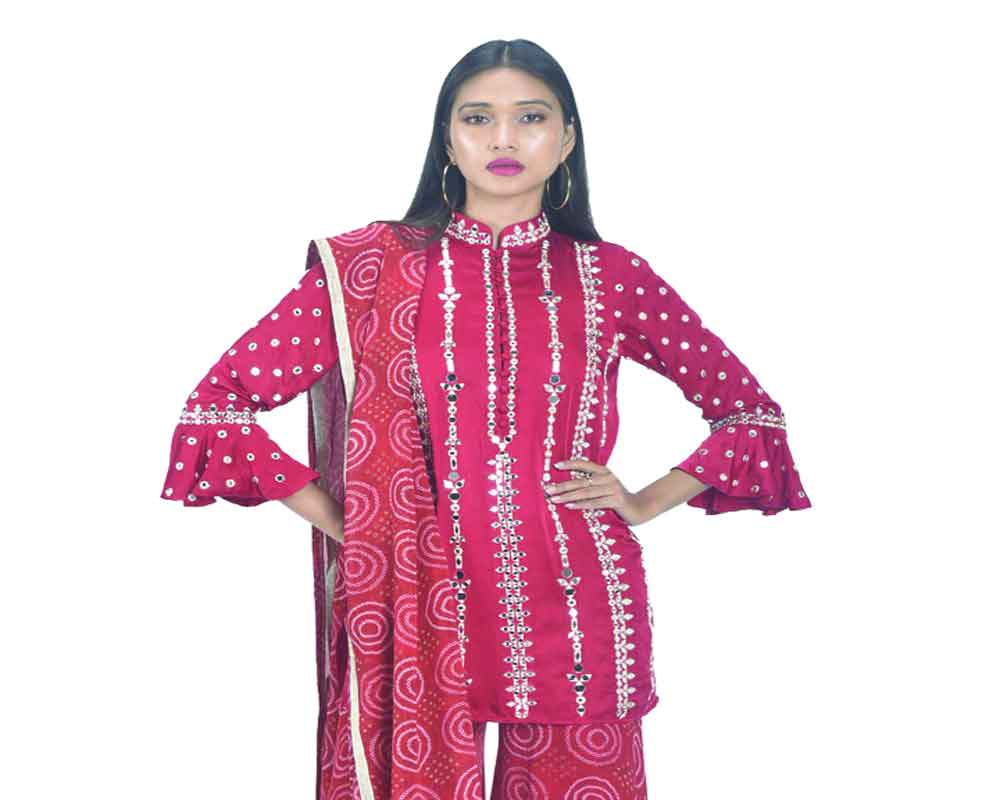The pandemic has impacted every sector including fashion which has had to reinvent itself, says Shalini Saksena
The COVID-19 pandemic has impacted each and every sector. Fashion industry is no exception and has left its mark with every individual. Those who think that the term only denotes couture and hence expensive, couldn’t have got it more wrong. One doesn’t have to wear expensive couture to be in fashion. Ready to wear clothing is fashion too, says Monisha Jaising. She is one of India’s first and foremost fashion designers, and was also one of the first to exhibit and retail through ensemble.
She tells you that in order to understand fashion one has to first understand the difference between ready to wear and custom-made. “In the fashion world when one says ready-to-wear it means Prêt short for Prêt-à-Porter, a French word which translates to ready-to-wear. It is high quality fashion produced in factories in a range, sizes and quality to fit the majority of people. Custom-made is one of a kind clothing that reflects the style of the designer who has made it. However, in India, ready-to-wear means clothing we buy off the shelf and custom-made means clothing made by the tailor, an ageold practice. Both work as long as the person wearing them feels comfortable in it,” Jaising explains.
One is told that designers too are thinking differently. “They are all thinking post COVID-19. The virus is not something that will disappear from our lives. Fashion has changed. There may be other viruses out there in the future given the way we are abusing Nature. This is a wake-up call for all designers. Everyone is thinking differently and the future of fashion is definitely going to change. Due to the pandemic people are having smaller weddings and therefore they are getting used to minimalist living and celebration. Health is going to be of prime importance. Even though health will be important, it doesn’t mean that one needs to compromise on fashion. Fashion is all about lifestyle; it is the way we live. Whilst everything is changing and one is moving towards a healthier lifestyle, fashion too will change and become more functional and minimalistic,” Jaising says.
However, minimalistic doesn’t mean that one will have to compromise on luxury. It will just mean that people will go for clothing that is easy to wear, carry and store. It also means that they will be looking for clothing that can be worn more than once.
“Take the wedding lehenga for example. With the weddings with smaller gatherings and reduced functions, instead of three-four functions, it would most probably be down to one. The bride-to-be may not want a lehenga in which she will look like a Christmas tree, though some may prefer to do so. But most will be wanting a lehenga that is more functional with pockets where she can put the face mask and sanitiser. It should be something in which she is comfortable and able to breathe given that she will also be wearing a mask, something that she can zip in and out. It would be advisable for the bride-to-be to put a ghoonghat — it will add to the protection,” Jaising tells you.
Material one chooses for the lehenga will be just as important. Materials that are smooth and silky should be a strict no-no. “Porous and rough texture materials are better. This will allow the wearer breathing space. Colour too would play a big role given that people have started having Zoom parties. While people may not be able to tell the material one is wearing what will stand out are the bright colours. Colours will play an important role. For Indian skin tone bright colours always work. Those wanting to wear darker ones, they will have to look at their skin tone. But most people know what colours suit them,” she says.
Interestingly, what is making designers do a rethink on fashion is because there has been no disease that has been so infectious. “In the last 10 years, there hasn’t been a disease which is so contagious that is why it is everywhere. Also, the world has become a smaller place. There is so much contact. Our population has also increased, there is rat-race. Hence, the virus is also doing a rat-race and has made the world take to work virtually including the fashion industry. We are already having virtual runway shows. We are already having conversations with customers online.
While this is not the future, what will happen is that there will be a combination of working offline and online even if the virus is not there will emerge that will increase one’s efficiency,” Jaising says.


























